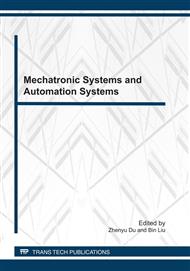p.88
p.92
p.96
p.99
p.104
p.108
p.113
p.117
p.122
A Digital Watermarking Method by Double Encryption Based on Arnold and Chaos in DCT Domain
Abstract:
Digital watermarking is an efficient method for the intellectual property protection and identification. A digital watermarking method by double encryption based on Arnold and chaos in DCT domain was proposed in this paper. First, the digital watermarking was transformed by Arnold scrambling, and then the watermarking was encrypted by chaos system again, so it made the watermarking get double encryption. The encrypted watermarking was embedded into the parts of low-frequency coefficients. The experimental results show that the algorithm is effective and robust for several attacks such as common noise, filtering, cropping and JPEG compression, as well as its good security.
Info:
Periodical:
Pages:
104-107
Citation:
Online since:
June 2011
Authors:
Keywords:
Price:
Сopyright:
© 2011 Trans Tech Publications Ltd. All Rights Reserved
Share:
Citation:


